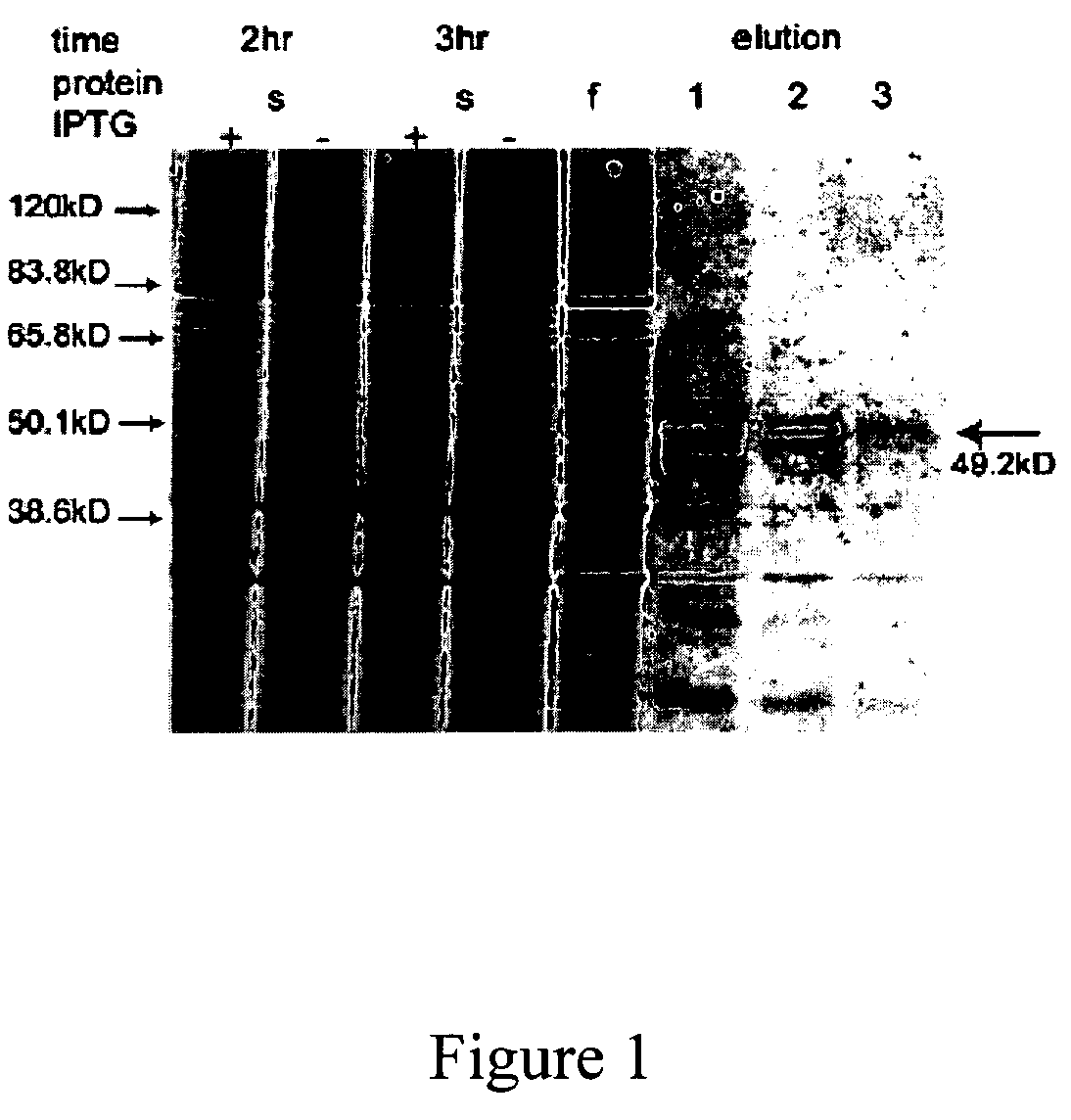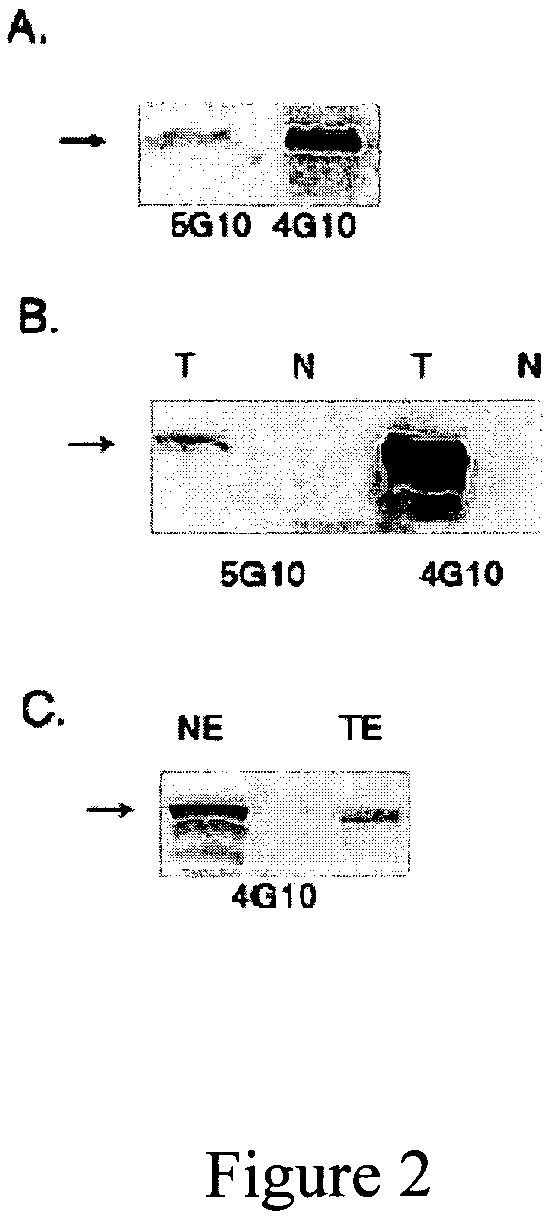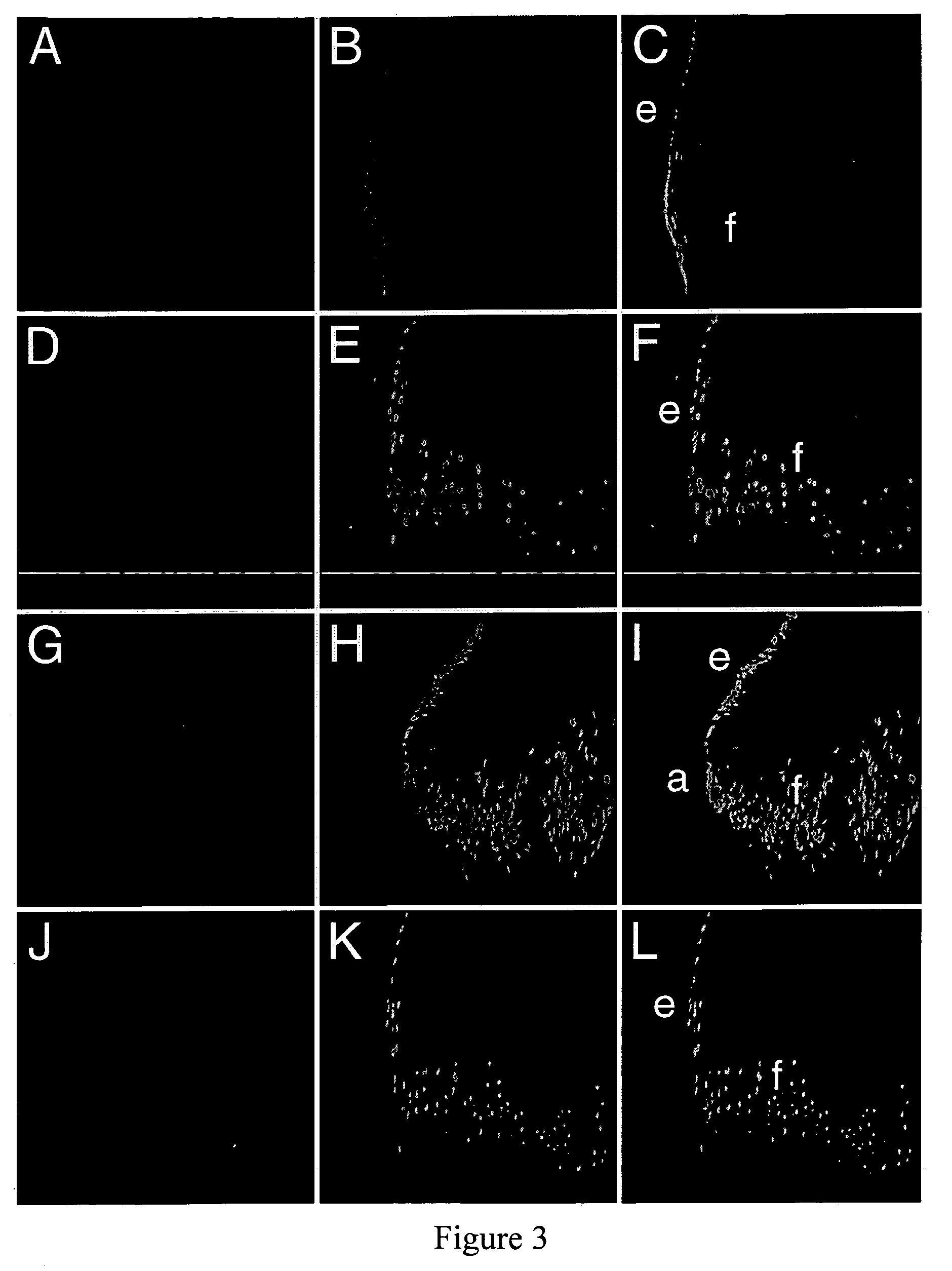Hybridoma cell lines and monoclonal antibodies recognizing Prox1
a monoclonal antibody and hybridoma cell technology, applied in the field of hybridoma cell lines and monoclonal antibodies recognizing prox1, can solve the problems of impeded routine use of prox1 staining in the clinic to identify lymphatics in biopsy specimens
- Summary
- Abstract
- Description
- Claims
- Application Information
AI Technical Summary
Benefits of technology
Problems solved by technology
Method used
Image
Examples
Embodiment Construction
[0020]The present invention concerns monoclonal antibodies that permit the quantitative and qualitative detection of Prox1 protein and their production. Two hybridoma cell lines capable of producing IgG to Prox1 were formed by fusing a-non-secreting mouse myeloma cells with spleen cells from a mouse immunized with a recombinant fusion protein generated between glutathione S-transferase and amino acids 547-737 of Prox1 of human origin. Thus, this invention comprises the hybridoma cell lines formed and the monoclonal antibodies produced from these hybridomas.
[0021]Presently, monoclonal antibodies are used routinely in the pathology laboratory to detect the presence or absence of proteins diagnostic for disease or predictive of the clinical outcome of cancer. They are advantageous over polyclonal antibodies since they can be produced in unlimited amounts, each lot having identical specificity and affinity. This makes monoclonal antibodies especially advantageous reagents to detect prot...
PUM
| Property | Measurement | Unit |
|---|---|---|
| molecular weight | aaaaa | aaaaa |
| optical density | aaaaa | aaaaa |
| pH | aaaaa | aaaaa |
Abstract
Description
Claims
Application Information
 Login to View More
Login to View More - R&D
- Intellectual Property
- Life Sciences
- Materials
- Tech Scout
- Unparalleled Data Quality
- Higher Quality Content
- 60% Fewer Hallucinations
Browse by: Latest US Patents, China's latest patents, Technical Efficacy Thesaurus, Application Domain, Technology Topic, Popular Technical Reports.
© 2025 PatSnap. All rights reserved.Legal|Privacy policy|Modern Slavery Act Transparency Statement|Sitemap|About US| Contact US: help@patsnap.com



